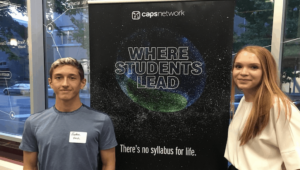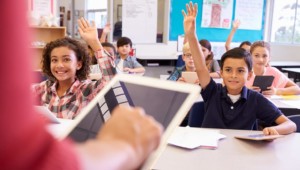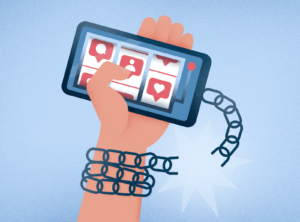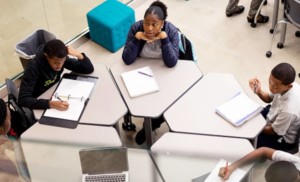The Open Social World to Come
Most learning today is closed and antisocial. Textbooks and bubble sheets are inherently antisocial. Most content and information systems are proprietary, they are expensive and they don’t work together. School architecture discourages collaboration; teachers don’t have much opportunity to work together; students only occasionally have a chance to learn together.
Most learning five years from now will be open and social. There will be 10 shifts from
- proprietary to open content
- buying print to buying assessment services
- one teacher to online professional learning communities
- organic and unsearchable to multi-tagged content
- lessons to pathways (linked learning experiences)
- one way learn to multiple strategies (games, tutorials, video, etc)
- classes to social learning groups
- grades to instant feedback and online recognition
- student as recipient to student as collaborator, tutor, author, and presenter
- differentiated and distributed roles for learning professionals
Open social learning will facilitated by an ecosystem of apps on and services around a platform. These ecosystems will be facilitated by public demand aggregation—a handful cities or states with 2 or 3 million students. They will be funded by a blend of philanthropic and private capital. They will extend learning and make it more engaging and more efficient.






John London
I know what I'm about to say will make me sound old fashioned and out of touch, but I can assure you that nobody is more 'into', and appreciative of "technology" than myself. But I also am not blind to "technology's" dark side either.
1st... of all, NOTHING in history is more "proprietary" than new technology. The lack of cooperation and downright greed between developers is downright astounding. Also it's my opinion, and experience, that this competitiveness and greed along with constant change/advancement (planned obsolescence) makes it astoundingly expensive to be kept current. This is a HUGE problem when the constantly changing and proprietary technology is used for the teaching of subjects that do NOT change, such as history, math, English, etc. It's my opinion that this never ending attempt by the education industry to adapt and 'keep up' with technology is the real reason for much of their shortfalls, financial or otherwise. The only possible advantage of 'new' technology in teaching is either to make learning interesting and fun on a currrent level for the student (which is a good thing but still needs to be kept in perspective) - or to more easily 'change' things that shouldn't be changed (bad thing). For example, the re-writing of history through governmental interference in order to further their own agendas. The old adage: "history is written by the winner" becomes as simple as the click of a mouse button.
The "Social" aspect/possibilities of technology is also a double edged sword: 'virtual' reality vs. 'actual' reality. While our youth are becoming more "social" technologically (virtually), they would rather communicate on facebook than have the 'actual' experience, and prefer to 'text' than have an 'actual' phone conversation, just as there are those of us old codgers who would rather have a phone conversatioin than 'actually' visit the friend. I myself have been asked to teach Photography at a local universtity via computer screen and network. The students don't even have to come to a classroom. This is "Social"? What a ludicrous method for teaching 'Art'.
Analog, print, and 'actual' reality teaching methods are not anti-social unless treated that way and are actually 'more' social than technological options. Replacing the printed version of an unchanging subject with a constantly changing digital version is subject to the same dangers we have experienced by the replacement of our gold-backed printed dollar with an unsubstantiated digital one. You become a slave to it and 'smart' doesn't even enter the equation.
The purpose of this response is not to dis-agree with or critisize the original post, but to express my concern that we are too easily 'charmed' by technology into mis-appropriating it's true usefullness. It's simply been my personal experience that technology is awlays selfish (proprietary), hungry (expensive), constantly growing (expensive again), and IT wants to be the point. IT (and/or "it's" developers) always seem to gain control of every situation and if IT can't do it with charm it will do it with technical failure.
Replies
Tom Vander Ark
Thanks John-lots of food for thought. I'd like to suggest other possible advantages of ‘new’ technology. Engagement (you called it interesting and fun) will lead to more time on task. In the next decade, we'll become much more sophisticated about motivation and should be able to tailor learning sequences by learning level, interests, and motivational profile. When you combine engagement with 24/7 access to digital learning, it's an affordable way to double time on task for many students.
Simulations and 3D animations will prove to be a much more powerful way to teach many aspects of science, calculus, and social systems.
And finally, online learning allows us to rethink school architecture and staffing. Differentiated (different levels) and distributed (different locations) staffing leverages great teachers where ever they are.
Together, the benefits of learning online will help students learn more faster and help schools become more efficient.